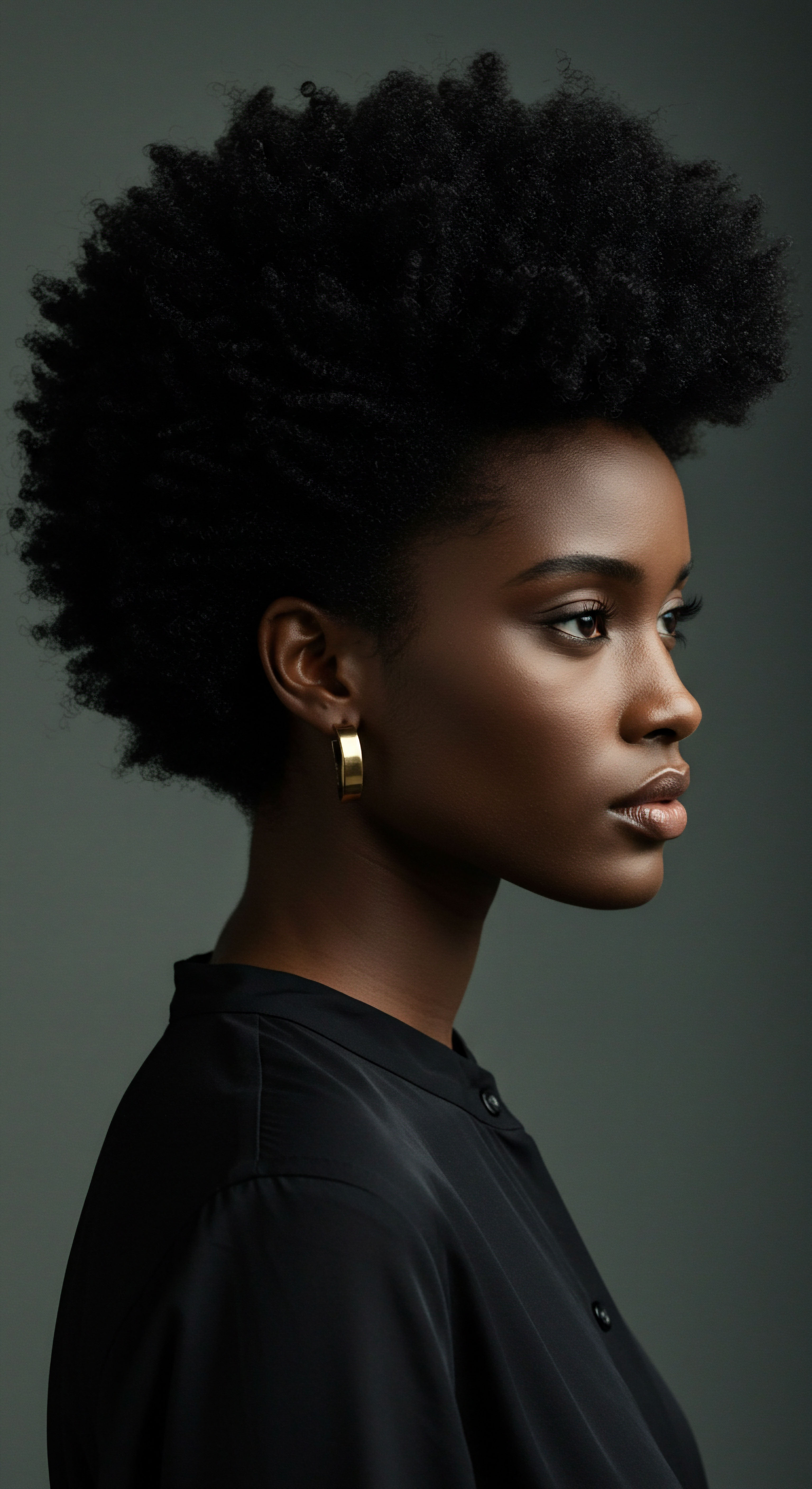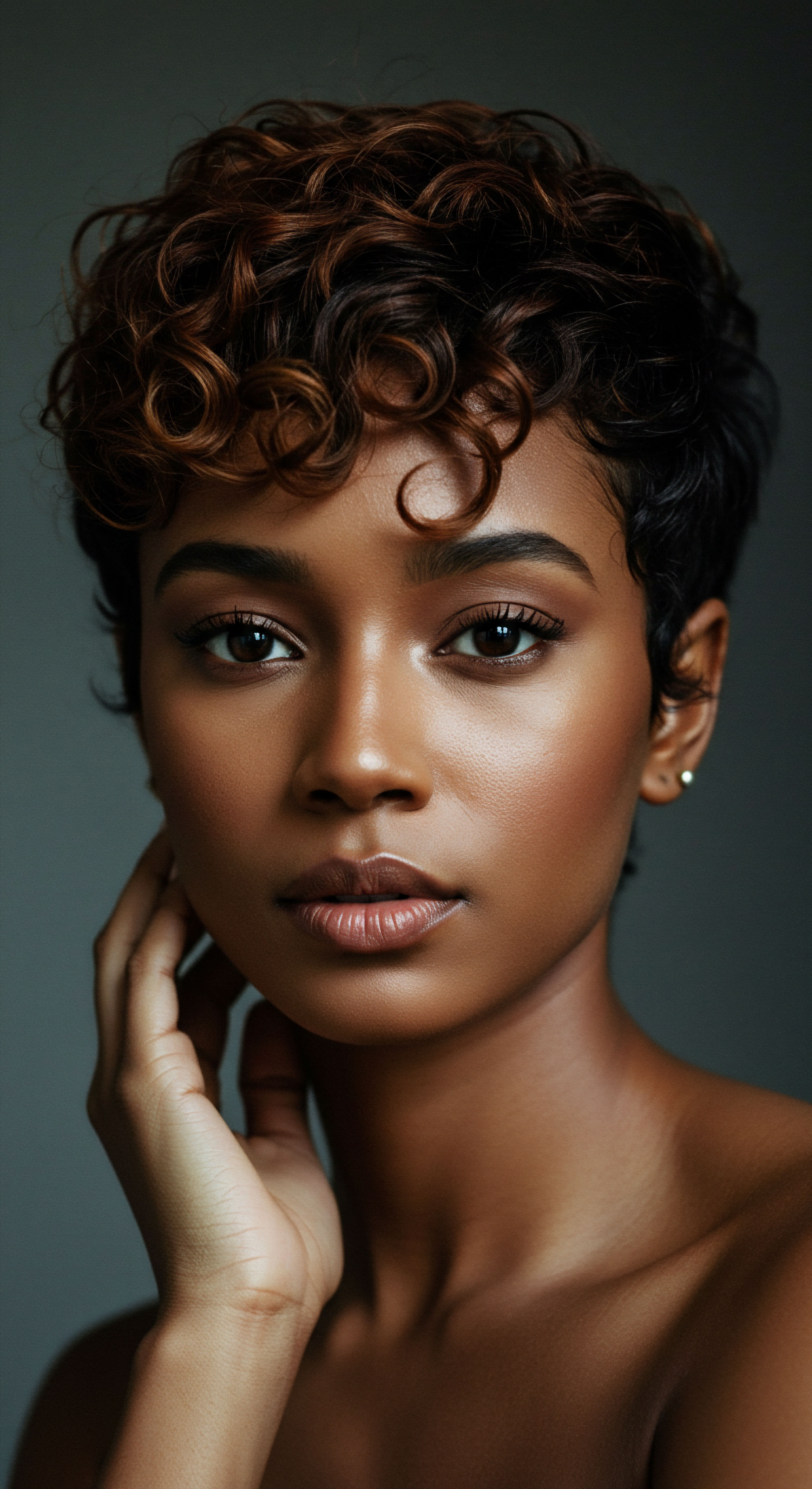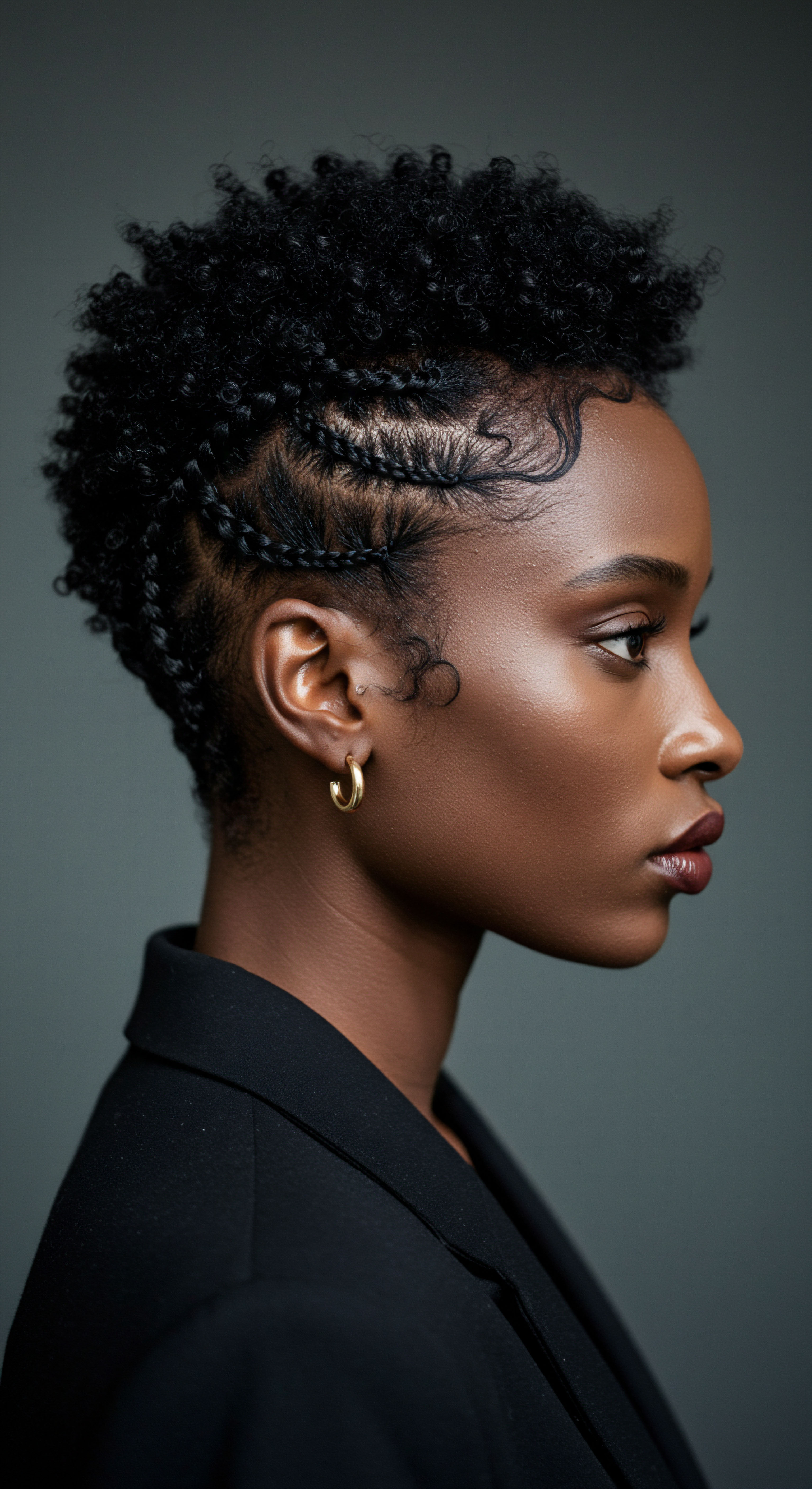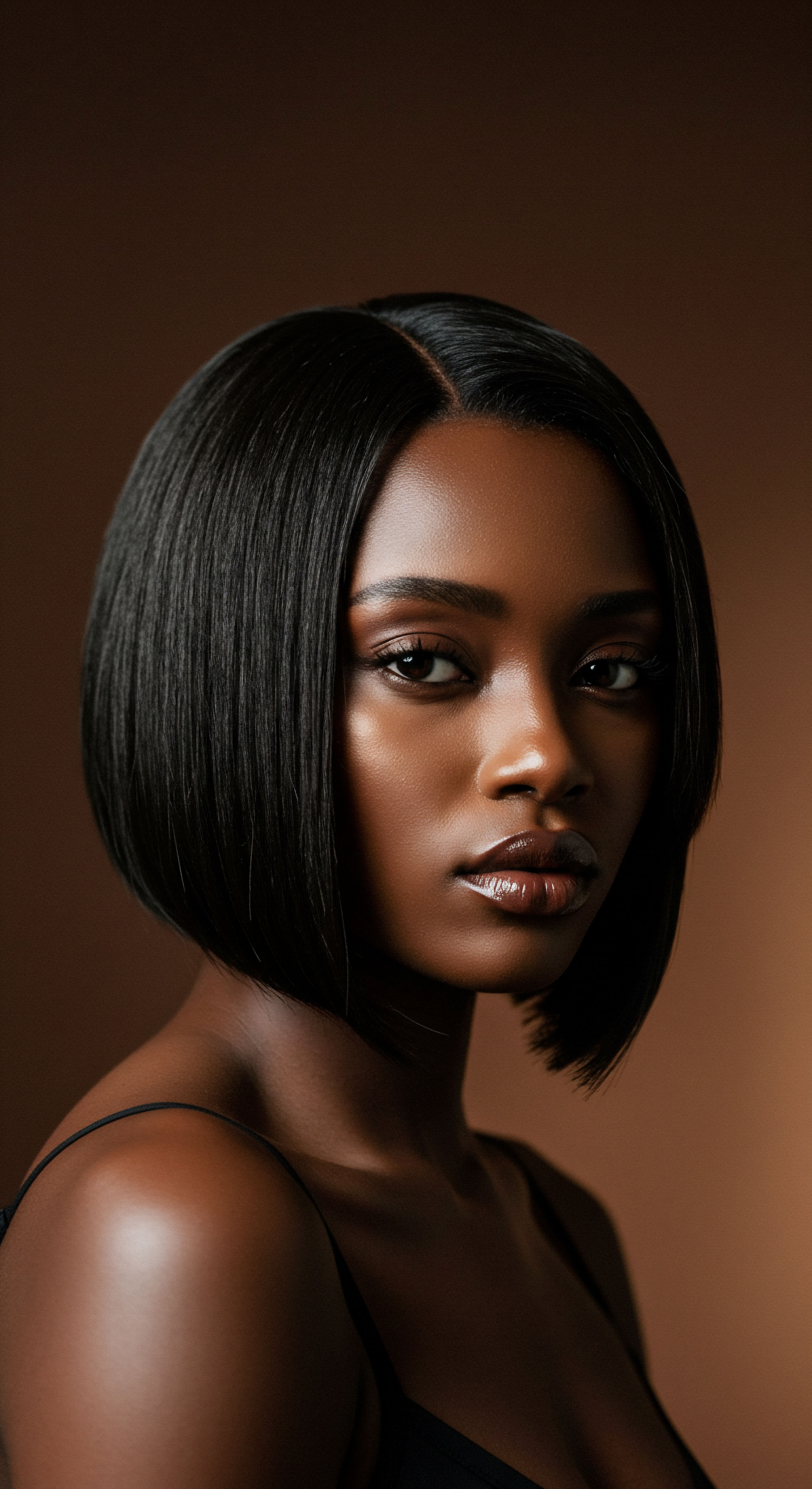
Roots
Within the quiet hum of ancestral wisdom, a simple truth often resides ❉ our hair, a crown of stories, deserves gentle keeping. How many times have we instinctively sought softness for our delicate strands, perhaps without pausing to consider the ancient whispers that guided such inclinations? This initial exploration invites us to trace those whispers back through time, to the very earliest understandings of fiber and form, and to the deep reverence for hair that shaped practices long ago.

Ancient Understanding of Textiles
Long before the advent of modern scientific instruments, humanity possessed an intuitive grasp of material properties. Early societies observed how different fibers interacted with the skin, how they offered warmth or coolness, and how they responded to movement. This experiential knowledge, passed down through generations, formed the bedrock of textile use. The fibers available in a particular region often dictated the methods of protection.
Think of the rougher textures of wool or coarse cotton, compared to the inherent smoothness of silk. These differences were not merely aesthetic; they carried practical implications for daily living, including hair care. The careful selection of materials for garments and coverings speaks to a deep, if unarticulated, understanding of their physical effects. This wisdom was not codified in textbooks, but lived in the hands that spun and the bodies that wore.

The Dawn of Silk and Its Spread
The origins of silk production, known as sericulture, are generally placed in ancient China, dating back possibly to 3000 BCE. Legend credits Empress Leizu with the discovery, an account of a silkworm cocoon falling into her tea, unraveling to reveal a single, lustrous thread. For centuries, the meticulous secrets of silk cultivation and weaving remained closely guarded within China, granting it a monopoly on this precious commodity. The demand for silk, however, could not be contained.
Its unparalleled softness and sheen made it a prized possession, leading to the establishment of the legendary Silk Road. This ancient network of trade routes facilitated the exchange of goods, ideas, and, critically, silk, across Asia, the Middle East, Europe, and North Africa. The earliest evidence of silk reaching distant lands includes its discovery in the hair of an Egyptian mummy from the 21st dynasty, around 1070 BCE. This discovery alone hints at silk’s early use in personal adornment and, quite likely, protection. By 200 BCE, sericulture had spread to Korea, and by 140 AD, it reached India, further disseminating its influence on textile practices.

Early Hair Practices and Protection
Across diverse ancient civilizations, hair held profound cultural and symbolic weight. It was a marker of identity, status, spirituality, and even fertility. The desire to preserve this significant aspect of self naturally led to practices aimed at its protection. Before silk became widely accessible, other materials were employed.
Linen in ancient Egypt served as a head covering, guarding hair from the harsh desert sun and dust. In India, traditional hair oiling with nutrient-rich oils served as a centuries-old ritual for hair health, often left overnight. The Greeks adorned their long, flowing hair with ribbons, and olive oil was a staple for moisturizing. These early methods, while varied, shared a common aim ❉ to shield the hair from environmental stressors and maintain its vitality. The very act of covering or binding hair speaks to an ancient understanding of its vulnerability and the need for careful preservation.
The deep, ancient reverence for hair across cultures spurred early protective practices, setting the stage for silk’s eventual role.
The journey of hair protection is as old as humanity itself, a testament to our enduring connection to our strands. The transition from rudimentary coverings to the sophisticated use of silk represents a significant evolution in this journey, driven by both necessity and a growing appreciation for silk’s inherent benefits.

Ritual
Stepping beyond the foundational awareness of fibers, we arrive at the realm of deliberate practice, where the quiet wisdom of ancient materials found its rhythm in daily life. This section considers how silk transitioned from a rare commodity to a cherished element in hair care, weaving itself into the very fabric of personal and communal rituals. It invites us to consider the conscious choices made by those who sought to preserve their crowning glory, acknowledging the subtle shifts in their understanding of hair’s needs and silk’s unique offerings.

Silk in Ancient Hair Traditions
The integration of silk into hair care practices across various cultures was not accidental; it was a deliberate choice rooted in observation and a desire for optimal results. In East Asia, particularly China, silk head wraps were commonly used by women not only to maintain intricate hairstyles but also to signify social standing. During the Tang Dynasty, as silk became more accessible, its use for hair protection expanded across different social classes.
In Japan, the traditional “kazashi” hair wrap, often crafted from silk, adorned and protected elaborate hairstyles, especially for geishas who relied on silk to preserve their intricate hairdos while sleeping. Korean noblewomen of the Joseon Dynasty wore silk headpieces to secure and embellish their hair, simultaneously shielding it from environmental harm and preserving its smoothness.
Beyond East Asia, silk found its place in Middle Eastern and South Asian hair traditions. In ancient Persia, silk wraps shielded hair from the harsh desert climate, helping to maintain its luster. Indian women historically used silk scarves and wraps to protect their hair from dust, sun, and pollution, recognizing silk’s ability to reduce friction and prevent breakage.
These silk wraps also held ceremonial significance. The smooth texture of silk was intuitively understood to be superior for delicate strands, minimizing tangles and preserving natural oils.

The Nighttime Sanctuary and Silk’s Role
The practice of protecting hair during sleep emerged as a particularly important ritual. Nighttime, with its hours of unconscious movement, presents a significant challenge to hair integrity. Tossing and turning on rough surfaces can lead to friction, tangles, and breakage. This is especially true for textured hair, which can be more susceptible to friction damage due to its unique structure and cuticle layers.
The realization of this vulnerability likely prompted the adoption of smoother materials for sleep coverings. Silk, with its inherently low friction coefficient, offered an ideal solution.
Using silk for nighttime hair protection became a widespread, though often unspoken, practice. Whether in the form of a simple head wrap, a structured bonnet, or a silk pillowcase, this ritual aimed to create a sanctuary for the hair, allowing it to rest undisturbed. This practice helped to:
- Minimize Friction ❉ Silk’s smooth surface reduces the mechanical stress on hair strands, preventing tangles and breakage.
- Preserve Moisture ❉ Unlike absorbent cotton, silk does not draw out hair’s natural oils, helping to maintain hydration.
- Maintain Styles ❉ The reduced friction helps preserve intricate hairstyles, extending their life and reducing the need for daily re-styling.
From imperial courts to daily sleep routines, silk’s smooth touch became a conscious choice for preserving hair’s beauty and health.
The evolution of silk accessories for hair protection reflects a deep understanding of hair’s needs. What began as practical necessity slowly intertwined with cultural expression and personal well-being, solidifying silk’s place in hair care rituals.

Relay
As we delve deeper into the enduring legacy of silk for hair protection, we move beyond anecdotal observations to a more profound understanding, where the whispers of ancient wisdom meet the clarity of modern science. This section aims to unravel the precise mechanisms that make silk so beneficial, grounding historical practices in scientific fact and cultural continuity. It is here that we consider the intricate interplay of biological properties, material science, and the persistent human desire for preservation and beauty.

What Molecular Structure Gives Silk Its Protective Qualities?
The exceptional properties of silk are rooted in its unique molecular composition and structure. Silk is primarily composed of two proteins ❉ fibroin, which forms the structural core, and sericin, a sticky, gummy protein that coats the fibroin strands. Fibroin, constituting approximately 70% of silk, is largely made up of small amino acids such as glycine, alanine, and serine.
These amino acids allow fibroin to form stable beta-pleated sheets, a planar structure that contributes to silk’s characteristic smoothness. This molecular arrangement results in a remarkably smooth surface at a microscopic level, giving silk its low coefficient of friction.
The presence of specific amino acids in silk, such as serine and glycine, also contributes to its ability to retain moisture. These amino acids possess hygroscopic properties, meaning they attract and hold water molecules, helping to maintain the hair’s natural hydration levels. This contrasts sharply with materials like cotton, which are hydrophilic and absorb moisture, potentially drawing it away from the hair and skin. The structural similarity between silk fibroin and hair keratin also allows for favorable intermolecular interactions, potentially strengthening hair fibers and reducing damage.

How Does Silk Compare to Other Fabrics for Hair Protection?
The superior performance of silk for hair protection becomes evident when compared to other commonly used fabrics. Cotton, while breathable and widely available, possesses a rougher surface at a microscopic level. Its fibers can snag and pull on the hair cuticle, leading to friction-induced damage, tangles, frizz, and breakage. This mechanical stress can lift or chip the hair’s protective cuticle scales, leaving the inner hair shaft vulnerable.
A study published in the Textile Research Journal indicated that high-quality silk withstands more mechanical stress than regular cotton when properly cared for, and can last up to twice as long, maintaining its structure and softness. This durability, coupled with its gentle interaction with hair, highlights silk’s long-term protective benefits. Furthermore, cotton’s absorbent nature can strip hair of its natural oils and moisture, leading to dryness and brittleness, particularly problematic for hair types prone to dryness.
In contrast, silk’s low friction coefficient (μs ≈ 0.21, as reported for a silk-like fabric designed for low friction) significantly reduces the mechanical stress on hair during movement, such as sleeping. This minimized friction helps preserve the hair cuticle, reducing split ends, frizz, and breakage. One anecdotal report highlights a reduction in hair breakage by 43% after switching from cotton to satin materials for sleep protection, a benefit often attributed to the reduced friction and moisture absorption. While satin (a weave) can offer some benefits over cotton, pure silk (a natural fiber) generally provides superior temperature control, breathability, and moisture balance.
Silk’s molecular smoothness and low friction, coupled with its moisture-retaining properties, offer superior hair protection compared to common fabrics like cotton.
The scientific understanding of silk’s interaction with hair reinforces the ancient observations that led to its use. The ability of silk to minimize friction and preserve moisture translates directly into healthier, more resilient hair, making it a powerful ally in modern hair care. The long-standing tradition of using silk for hair protection, therefore, stands on a foundation of both intuitive wisdom and empirical evidence.

Cultural Continuity and Modern Applications
The historical practice of using silk for hair protection has not faded with time; rather, it has been rediscovered and re-contextualized within contemporary hair care. This continuity speaks to the enduring efficacy of silk and the persistent needs of textured hair, particularly Black and mixed-race hair, which often requires additional care to mitigate friction and moisture loss. Modern hair care brands and advocates frequently recommend silk pillowcases, bonnets, and scarves as essential tools for preserving hair health, especially overnight. This re-adoption is not merely a trend; it is a recognition of the material’s proven benefits, aligning with centuries of lived experience.
The cultural significance of head coverings in various communities, historically used for protection, modesty, or social signaling, now often finds expression through silk, marrying tradition with scientific understanding. The ancient practice of wrapping hair, now often executed with silk, offers a powerful link to heritage while providing tangible benefits for hair resilience and vibrancy in the modern world.
| Fabric Type Silk |
| Key Properties for Hair Smooth surface, low friction, protein structure, less absorbent |
| Impact on Hair Reduces breakage, minimizes frizz, retains moisture, preserves style. |
| Fabric Type Cotton |
| Key Properties for Hair Rougher texture, highly absorbent, hydrophilic |
| Impact on Hair Causes friction, leads to tangles and breakage, absorbs natural oils, promotes dryness and frizz. |
| Fabric Type Satin (Polyester) |
| Key Properties for Hair Smooth weave (synthetic), can trap heat, less breathable than silk |
| Impact on Hair Reduces friction compared to cotton, but may not retain moisture as effectively as silk; can cause sweating. |
| Fabric Type Silk generally offers superior benefits due to its natural properties and interaction with hair. |

Reflection
As we conclude our exploration, the journey through silk’s enduring relationship with hair protection reveals a profound interconnectedness between ancient wisdom and contemporary understanding. It reminds us that some truths, whispered across generations and cultures, possess a timeless resonance. The gentle touch of silk, once a luxury reserved for a select few, now stands as a symbol of informed care, a testament to the enduring human desire to nurture and honor our strands.
The historical roots run deep, grounding our modern practices in a rich soil of observation, ingenuity, and a quiet appreciation for the materials that serve us. Our hair, indeed, remains a crown of stories, each strand a testament to the gentle keeping it has received, whether through ancestral ritual or modern science.

References
- Bhushan, B. et al. “Friction Dynamics of Straight, Curly, and Wavy Hair.” Journal of Tribology, 2014.
- Clark, M. “Skin and Tissue Damage from Pressure and Shear.” Journal of Tissue Viability, 1996.
- El-Messiry, M. et al. “Electrostatic Charge Accumulation on Textile Fabrics.” Journal of Textile Science & Engineering, 2017.
- Engel, W. & Hoppe, U. “Hair Cosmetics Containing Sericin and Pelargonic Acid.” Journal of the Society of Cosmetic Chemists, 1988.
- Hata, T. “Hydrolyzed Silk Protein as a Hair Conditioner.” Fragrance Journal, 1987.
- Hoppe, U. et al. “Hair Products Containing Sericin and Olive Oil.” German Patent DE3312066A1, 1984.
- Leon, N. H. “Frictional Properties of Human Hair.” Journal of the Society of Cosmetic Chemists of Great Britain, 1972.
- Padamwar, M. N. & Pawar, A. P. “Silk Sericin and Its Applications ❉ A Review.” Journal of Scientific & Industrial Research, 2004.
- Schwartz, A. M. & Knowles, D. C. “Frictional Effects in Human Hair.” Journal of the Society of Cosmetic Chemists, 1963.
- Sherrow, V. “Encyclopedia of Hair ❉ A Cultural History.” Greenwood Publishing Group, 2006.
- Synnott, A. “Shame and Glory ❉ A Sociology of Hair.” British Journal of Sociology, 1987.
- Tarlo, E. “Entanglement ❉ The Secret Lives of Hair.” Oneworld Publications, 2016.
- Williamson, S. et al. “Friction and Shear in the Prevention of Pressure Ulcers.” Journal of Wound Care, 2013.